Norway was occupied for the vast majority of the Second World War. We take a look at the story of Norway during the war, from initial occupation through to the resistance movement and eventual liberation.
Invaded and torn apart, left on its own by allies, what role did Norway play during the Second World War? And what impact did the war have on the country and the people there?
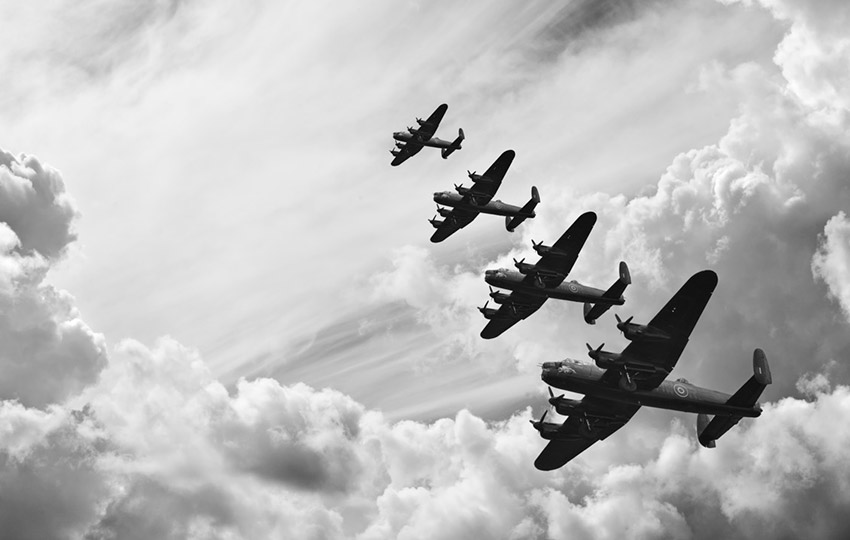
While Norway remained neutral in World War I, the Second World War was a different story. Let's take a look at this important time in the history of Norway.
When the Soviet Union invaded Finland in 1939, volunteer movements began to be organized to help fight against the Soviets. A number of these volunteers came from nearby countries–Sweden and Norway in particular.
The Winter War
During the Winter War, the Norwegian government technically did not allow men to volunteer for the war in Finland out of fear that that would aggravate the Germans and hamper their goal of remaining a neutral country.
Nonetheless, more than seven hundred men and women volunteered to fight with Finnish troops including doctors and nurses. Several future leaders of the Norwegian resistance movement such as Max Manus and Leif Andreas Larsen, better known as Shetlands Larsen, also took part.
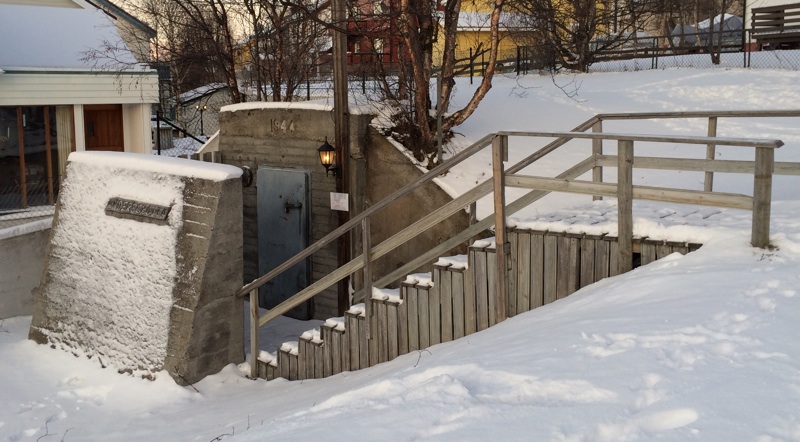
Citizens of Norway also held collections for food, supplies, and money to aid Finnish refugees and communities that were devastated by the conflict.
The Norwegian government secretly donated artillery and ammunition to the Finnish army, as well as allowing airplanes and other materials to be sent to them through Norway. After the end of the Winter War, the Norwegian aid continued and was shifted to reconstruction.
The invasion of Norway
On April 9th, 1940, the first German troops arrived in Norway. There were three major reasons for the invasion of Norway:
It was strategic, in that an occupation of Norway allowed the German Army and Navy to secure ice-free harbors to control the North Atlantic; to secure the routes used to transport iron ore from Sweden–a much needed commodity in times of war; and to pre-empt a British and French invasion with the same purposes.
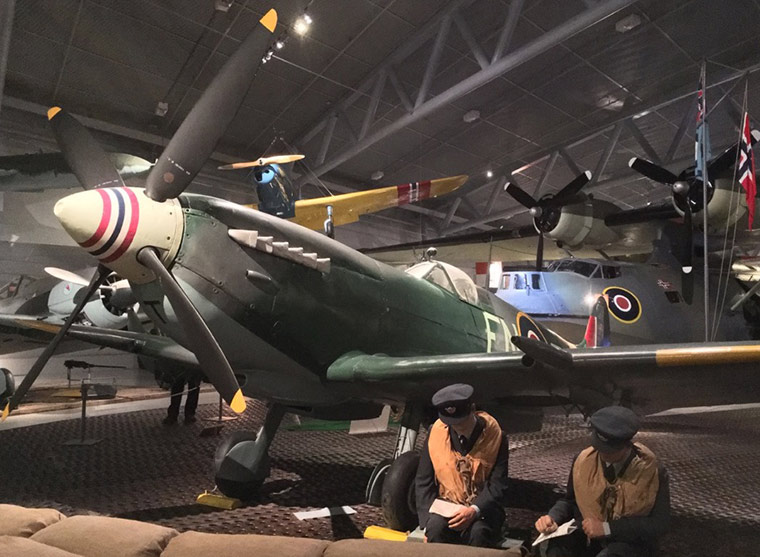
The man in charge of the invasion strategy was General Nikolaus von Falkenhorst. To prepare his strategy Von Falkenhorst spent an afternoon with a travel-guide book that, amazingly, allowed him to come up with the gist of his plan.
An element of surprise
To many Norwegians the invasion came as a surprise; Norway had managed to stay out of the First World War, and much of the country believed that it would be staying out of the second one as well.
Trade agreements secured with Germany and Great Britain in early 1940 was thought to be additional protection against invaders, as was Norway’s military presence on the nation’s borders, and the close proximity of Britain’s impressive naval power.
In truth, the Norwegian army was less than prepared for the ferocity of the German invasion. As the Germans began capturing key ports and coastal cities, many Norwegian army commanders moved their men further inland to take advantage of the country’s rugged interior.
Rapid progress
With the German plan of attack, their Navy and other airborne troops struck simultaneously at several key locations: Oslo, Bergen, Stavanger, and Trondheim, amongst others. The coastal forts at the Oslofjord held up their offensive initially, but once the Germans had organized themselves, its progress was rapid.
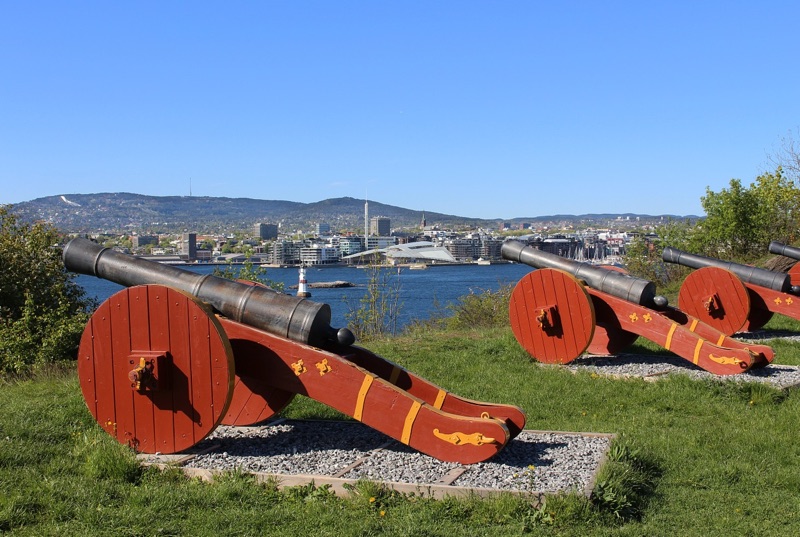
By 13 April, a mere four days after the invasion started, the German Army had moved more than seventy miles outside of Oslo and captured Halden, south-east of Oslo and Kongsberg, to the south-west. A week later eleven days into the campaign, the German army had advanced almost two hundred miles from the capital.
The Norwegians put their faith in the British and French armies arriving in an effort to help stem the advance of the Germans, but unfortunately, it never came.
Read more: World War II's Operation Claymore
The British did initially try to stem the German advance through Norway; they planned smaller landings that were made north and south of the city of Namsos and Andalsnes. The idea was that the Allied units would then meet Norwegian defense forces and move towards the city of Trondheim.
The British landed at Namsos on 16 April and Andalsnes on 18 April. Three days later, the Germans attacked them and their Norwegian counterparts and after about one week of fighting and maneuvering the British troops were re-embarking at Namsos and withdrawing from Norway.
The Battles in Narvik
One of the most significant theatres in the early days of the war and in fact Germany's first defeat in the war came in Narvik.
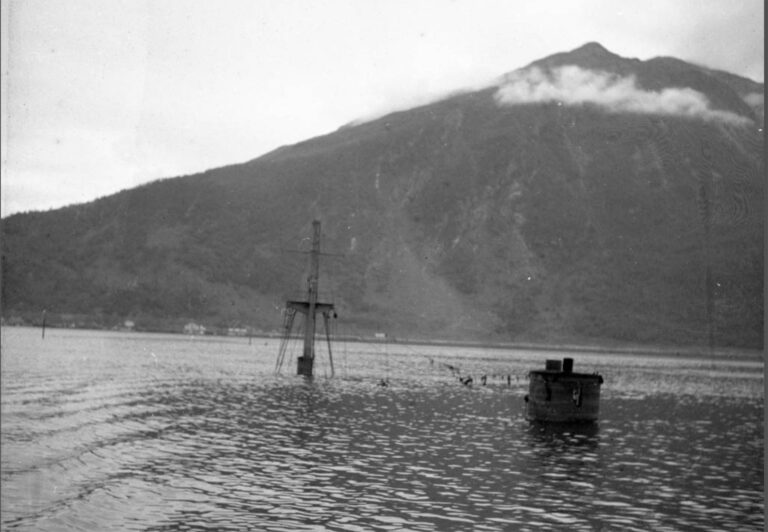
Why Narvik? Both Hitler and the Allied forces wanted to seize control of the iron ore supply line from Sweden to prevent it falling into enemy hands.
Two naval battles and a land campaign known collectively as The Battles of Narvik saw Germany's sea capability severely depleted. However, despite the defeat, Narvik would be retaken by German troops shortly afterwards because of bigger strategic moves.
The German advance
By the end of May 1940, the British government and military withdrew from Norway completely. It was deemed strategically more important to support the ongoing campaign in France.
Britain’s withdrawal from Norway was to also have major political consequences with the resignation of Prime Minister Neville Chamberlain who was replaced by Winston Churchill.
King Haakon of Norway was put on a boat with his family and other members of the Norwegian government on 7 June heading towards the United Kingdom and other allied countries. On 9 June, the German campaign in Norway was complete.
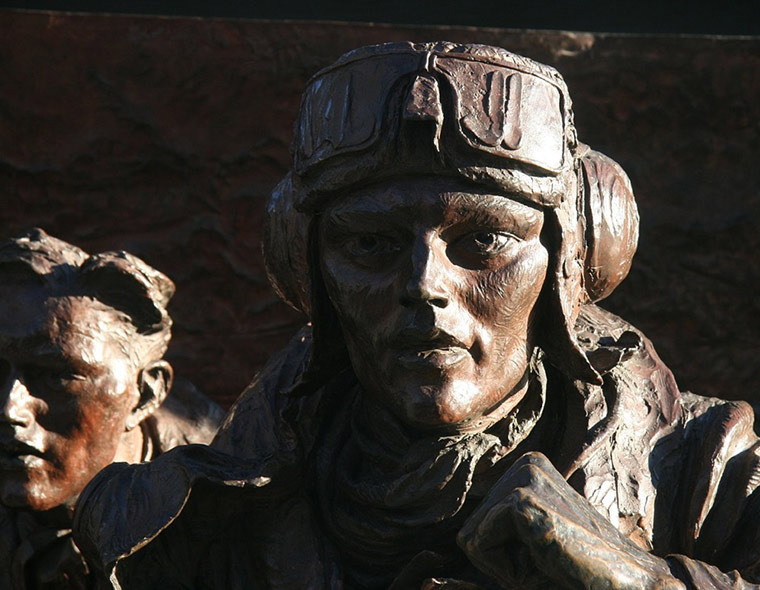
By the standards of World War Two, the fighting in Norway during the invasion was far from extreme.
A little over one thousand Norwegians were killed or wounded, the British suffered nearly two thousand killed or wounded and five hundred French and Polish troops were killed or wounded.
The Germans lost more than five thousand men; many of whom were killed at sea while en route to Norway or during the first days of the invasion.
The occupation of Norway
The occupation was a less than comfortable time for Norway. The German military requisitioned homes, businesses, and property, schools, all while spreading Nazi symbolism and ideologies.
Although the soldiers were ordered to behave properly towards the civilian population in Norway, they had the authority to control and the right to arrest people they thought to be suspicious.
Continuously adding new regulations, laws, and demands made it easy to be in danger of arrest.
A ban on Norwegian icons
Norwegians were not allowed to move about freely or to show patriotic feelings in any manner. During these years, singing the national anthem and flying the flag of Norway were banned.
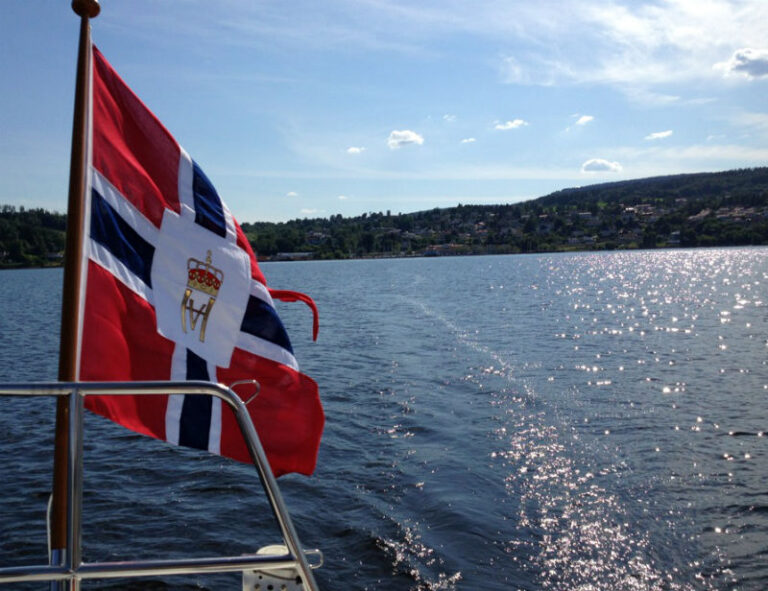
Death was a common punishment for crimes such as listening to radio stations deemed culturally inappropriate or reading many of the illegal or gray market newspapers.
Urban areas were hit the hardest by the occupation when it came to aspects such as rationing. Everything from food and clothes, to toys and furniture, were rationed.
Sugar, coffee, and flour were the first, followed by all imported foodstuffs and eventually bread, butter, meat, eggs, and dairy products. In the summer of 1942, even vegetables and potatoes were rationed.
Living with ration books
Each household was given one ration book per family member. These featured tickets that gave the holder the right to buy a specified amount of a certain food item, at least in theory. Availability of key food items became a major issue.
In order to combat the lack of food, people turned to what they had always done; they fished, hunted, or farmed what land they could. The growing of potatoes, Swedish turnips and carrots became a usual activity for anyone who had a small garden patch available.
The local community governments even went as far as to distribute allotments in parks and outlying fields; even the beautiful flowerbeds were turned into potato fields.
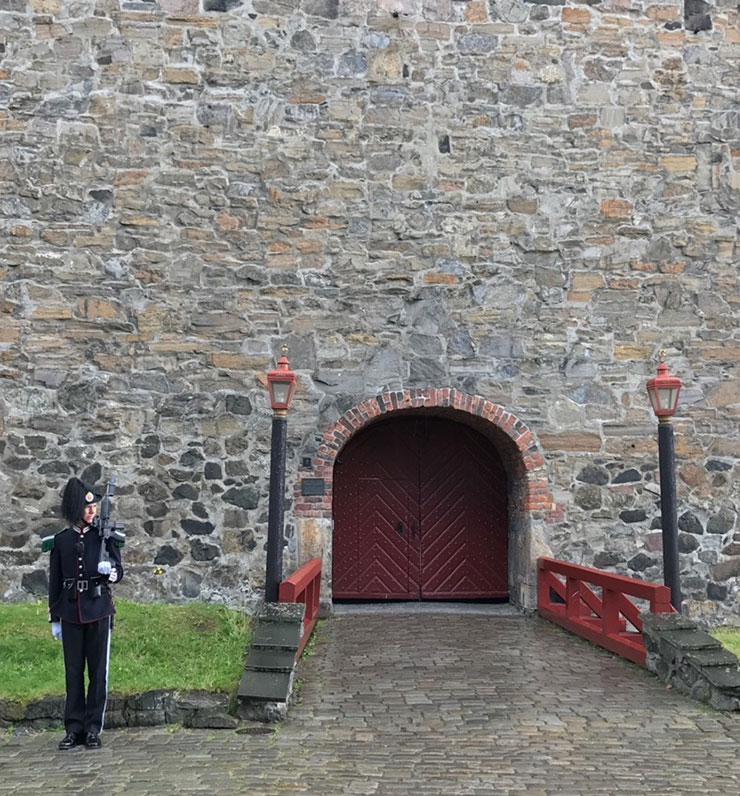
Perhaps the most intimidating part of the war for Norwegians was the bomb threat. Shelters and blackout curtains became a part of everyday life.
Both the German and Allied militaries carried out extensive bombing campaigns, leaving many towns, villages, and cities completely flattened. Thousands of people were displaced which caused them to flee to the cities and stressing the already shaky rationing and housing systems.
The Norwegian resistance
Despite the hardships of the occupation many Norwegian military and civilian personnel continued to fight for their freedom. Hitler’s well-planned invasion of Norway caused chaos and death, but not demoralisation.
Almost instantly after the invasion, resistance movements sprang up across the country. Thousand of men and women were eventually involved with some form of underground activity.
Many of these clandestine operations were so successful that close family members were unaware of each other’s involvement until after the war was over.
Operations of the resistance movements varied: writing and distributing underground newspapers, smuggling people and goods to and from Sweden or the United Kingdom, and even blowing up ships, destroying train tracks and factories to disrupt German trade and supply routes.
Throughout the war, Norwegian resistance activities were supported by the Shetland Bus operation. Small fishing vessels helped ferry goods and intelligence officers between Scotland and occupied Norway under the cover of darkness.
If you want to find out more about the work of the resistance fighters, the story of Norwegian resistance hero Max Manus is well worth looking into.
The end of the war
On the 8 May 1945, Germany surrendered and Norway was once again a free country. Around 50,000 Norwegians were found guilty of treason after the war.
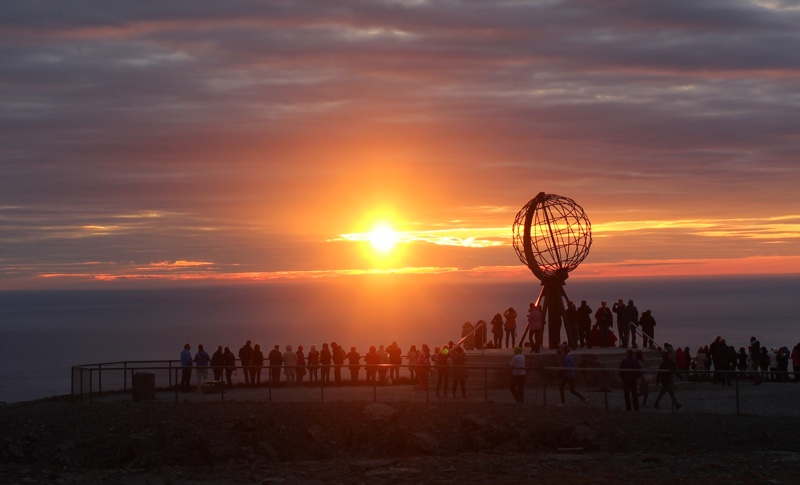
They had been members of the Norwegian national socialist party, Nasjonal Samling, who sympathized and collaborated with the Nazis.
Twenty-five of these people were executed for treason. Reconstruction of the country began in earnest; the merchant fleet of Norway was built up again and soon trade was opened and the quality of life in Norway improved drastically.
There are many interesting stories from Norway during the Second World War, from the successful sabotage known as the Heavy Water war to the destruction of most cities in northern Norway.
This article provides the basic information on Norway’s role as an occupied country that fought back and rebuilt their nation to become one of the wealthiest and most socially equal countries today. I'll be back with more detailed stories soon.
If you're interested in World War II history, why not share your interest in this fascinating and important memory by sharing this article on Pinterest? We've got just the pin for that. Hit those social sharing buttons to get started.

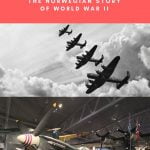

Interesting article – I am wondering if your readers might be interested in my project (website below). I am researching and writing an historical novel about my great-uncle Thor Jensen, who I believe was murdered by Nazi soldiers in 1941 in Hammerfest.
although this might be too late, id be more than happy to read up on it. you already have my attention 😀
It has always interest me about why Germany didn’t invade Great Britain by way of Scotland, so close by sea to Norway. I’ve learned that the raging North Sea was a big deterrent and that Germany didn’t have a strong enough naval force to succeed. Also, Germany air power was needed elsewhere on the Europe Continent and couldn’t successfully combat against the UK Spitfire.
Denmark & Norway’s role in WWII is very interesting to me and how they succeeded in keeping Democracy alive, which has not been as informative in History Books as UK, France, etc.
Enjoyed reading about the war in Norway as I had a friend who was part of the ski patrol group during the war, wearing all white clothing along with white skis that are supposedly in a museum in Vail, Colorado. When in Kirkenes last year, as I walked around a bit some of the members of the Hurtigruten we were on came up out of the safe cellar after a visit mentioning how interesting it was.
I am thinking of writing the story of my grandmother and aunt who had to put up with the German soldiers who occupied our little farm while my dad was a prisoner of war in Japan…as many Norwegian sailors were as their merchant marine ships were bombed the day after Pearl Harbor! My dad was one of a few survivors after 3 and half years in pow camp while his mom and sister had to put up with the German occupation of our farm…the stories of how they survived is a legacy to my amazing Bestemor and Tante Ellen!
I hope you wrote that book. I would love to read it!
Please do write your book. Our children and grand children need to hear these stories. It is heart-warming to know this part of history and the brave souls who endured such times.
Have you considered after writing to submit your book to Movie producers?
Best wishes with what ever you choose.
Yes interesting…seen some of the German enforcements near Utvota,Namsos fjord-canons still entact.Also story how Russians came in the nineties to repatriate remains of prisoners buried near there.
Reading “Berlin”by Antony Beevor.There are many mentions of the Nordland division ,fighting with the Nazi Germans at the end.No doubt, if any of these survived the Russians they would have been tried with treason in Norway at least.
Have seen the film “Max Manus” recently.He was a genuine Norwegian hero.
My father was from Feoy Norway where the Germans had an outpost but was also a strong resistance presence. Supposedly my uncle was a translator in the American Army stationed in Britain during this time translating radio messages from this resistance movement. I’d like to read more about the actual story my family on that side has all passed
I think the Norwegian fishermen helped the UK a lot?
I know after the war we gave you some Warships to restart your Navy.
Each year we get the gift of the Christmas tree at Trafalgar Square in London for what we did and tried to do and it is much appreciated.
Toby
My wife’s grandfather was in the underground resistance. He was involved in construction of the bunkers where the giant Nazi guns were located. He and others snuck dirt into the mix so the bunkers would break in the extreme cold. The Nazis were surprised when their guns would fall into the water. He survived when others were shot right next to him. He eventually immigrated to the U.S.
What information do you have of the young women who got involved with the German soldiers?
The award winning book, Skammens Barn by Veslemoy Kjendsli, Oslo, Norway is a true story of the children born out of these unions.
(Google Veslemoy Kjendsli 1945)
I am trying to locate an online English version as
I have only seen it in Norwegian and German.
Norway caught between two monsters: Stalin of Soviet Socialist Russia, and Hitler of National Socialist Germany. And, abandoned by “allies”. I can’t imagine a more demoralizing geo-political predicament. “There is a reason for NATO.” Jens Stoltenberg
We had a tour guide in Thomso, who’s mother married a German soldier. They were forced back to Germany after the war. It took her 40 years to get her Norwegian citizenship back.
When I was about to be married fifty years ago my Norwegian grandfather was interested to know my fiancé’s background. When he was told, German, Grandpa’s comment was, “Hrumph! He’s good enough for musky bait!” At the time I was unaware of the history. Now I know Grandpa Fossum wasn’t kidding.
Oh wow, what an article to find. My Grandmothers brother (beautiful David) lies in Stavenger graveyard all the way from Wellington, New Zealand. History faded when my Grandma passed but I need it all for my son & me …& my Dad 💕
It should not be forgotten that Norways biggest contribution to victory was their Merchant Fleet which was the 6th biggest in 1940 with many vital tankers.
My Father was in the Merchant fleet and went down with the ships twice and survived. A German Uboat picked him up and he ended up in Africa where he contracted malaria.
We have family in Oslo and visit very often from our home in the USA. Of all the many interesting sites we’ve seen and experienced in Oslo, among our favorites is the Norwegian Resistance Museum (Norges Hjemmefrontmuseum) next to Akershus Fortress. It is a respectful, dignified and very informational tribute to the Norwegians who risked their lives during the resistance. The stories are immensely powerful, and it’s hard not to be impressed with their courage and Norwegian patriotism. We highly recommend a visit – and take your time, it’s well worth reading everything as you make your way through.
Have an associate in US whose uncle a Norwegian resistance fighter was captured and executed. While my friend visiting Oslo wept at the monument the young Norwegian lady tour guide put her hand on his shoulder and said, we have not forgotten. There is good in the younger generation.
According to family stories, my great grandfather John Aasen’s home was taken over by the Nazis and he was forced to live in the sauna next to his home. Again, the story goes that after his death the town made the sauna an historical site. This occurred “a ways outside” of Lillehammer, but where? I am trying to find out. I’m sure there must be more to the story of the Nazis overtaking that town. I was looking in WWII history when I came across your article. Any ideas where I might find more information?
My grandfather was a Norwegian Naval Captain, my dad survived occupation in Larvik with his sister and my grandmother. Jacob Backer my grandfather was a great leader, and was nearly kilked two times from Uboats in the Atlantic. There is a photo of hom coveted in the crude oil his ship was transporting for the allies. He served the entire time, and was always ladt off his ship as it was sinking. He had the shakes after the war, he sailed but his nerves were very affected. My dad told us stories of acts of resistance, my grandmother was angry at the Nazi invasion every day of her life and was having nightmare flash backs of the stealing her blankets, taking their food, sugar, and ransacking their home during a birthday party. Also she was dealing with it alone, and scared. We all saw it in the whole family, the Nazis were brutal, and made them all suffer trauma they were never the same. My dad rode a bike to a bakery to earn money, at 10 years old. He wiuld pass a Russian worker prisoners camp and try to help the starving men by throwing some food he had oner the fence when guards weren’t looking. He grew a garden to survive, and they were only allowed 1 pig per household per year. I din’t want anyone to ever forget. There must be more detailed stories of lives that are compiled. Its good if it circulates to refresh the places that are becoming dictatorship friendly like the USA. There is nothing good about that. And its no joke, so I really want the history to be fresh again with as much of the suffering explained since the USA, only veterans know the dangers firsthand. I can’t imagine surviving that cold climate, and going from peace to threatened daily overnight. My grandmother was so bitter over the way she had to watch her sweet children suffer for most of their childhood, and who knows, the Nazis forced their way in her home, and took what they wanted. Her accent saying there was only black brod, and no sugar, no flour, and how at 5am the sound of Nazi military boots on their streets, marching to intimidate the citizens. She described their boots, and she would talk about it like its still going on. The whole country paid so dearly for the freedom from that tyrrany, and I am proud of Norway, and sad for so much loss. The Nazis would destroy whole towns as the were leaving, conducted scortched earth campaigns when they had gotten defeated by Norwegian citizens resistance fighters, soldiers from UK, USSR, and France I read. Would love a lot more comprehensive information. My grandfather’s 6 years at sea too, would be nice to have the full story of each allied mission, his capt logs, and to honor all we lost and who survived, but paid fully. It was only one option for my family, and that was fight to be free or die fighting to be free. Never to accept, always resist.
I’ve had the privilege of interviewing Norwegian-Americas who were young people in Norway during the occupation. Their accounts helped to form my historical novel, The Jøssing Affair, set in a fictional fishing village south of Trondheim. It’s about the Shetland Bus and the efforts of an British trained agent and fisherman and the Resistance combating not only the Germans, but vicious actions of Norwegian Henry Oliver Rinnan’s Norway’s #2 war criminal. I’ll be publishing the sequel in June. Wonderful accounts here in the posts.
Hello Janet, Thank you for your post. I am studying nutrition. (I’m retired, but, it’s one of the subjects I am interested in). I am interested in how the Norwegians survived during the occupation. I am particularly interested in what they ate after supplies were rationed and as the war progressed. I see that some had gardens. Were you able to find out from your interviews if they ate fish, or any dairy (such as yogurt maybe?). What type of vegetables did they grow and eat. I have read that they had some limited access to potatoes. Do you know if they had access to rice? I realize that the folks you have interviewed were children during the war but, maybe they remember.
I would love to read anything that you have been able to find. I think that how folks survived during the War is fascinating. Bless you and have a great day! Nancy Hill
I grew up during the war , not in Norway, but in The Netherlands Your question if citizens of the occupied countries had access to rice , made me write this short note. All the food we had during the war was what was grown in our own countries and that after the Germans took more than their share Therefore, as rice does not grow in a Northern European climate , there was no rice.
Interesting read- thank you. Do you have any information on Melvin Litland? My dad lived on different farms. I believe that my dad lived in Lyngdal, Norway. Thank you in advance. Susan Engle
You neglected to mention the 15,000 who joined the SS and German Wehrmacht. But maybe these were a part of the 50,000 traitors that you did mention.
It’s worth mentioning that Norway had two Spitfire squadrons (331 and 332) from 1941/ 2 and, I believe, one Mosquito sq 334, and one Catalina sq, 330. These operated in the UK within the RAF.
331 and 332 squadrons had 180 confirmed enemy planes shot down plus 35 probable.
Norwegian ships carried 20% of all oil and 8% of dry goods imported into the UK during the war.
All Norwegian shipping was run by Nortraship from London. It had 1000 ships and was the world’s largest shipowner. (all shipowners joined, only the ones in Norway, after occupation, or in enemy ports were lost to the alleys)
The UK politician Phillip Noel-Baker said the Battle of England would have been lost it they hadn’t had access to Norwegian tankers.
Svein, I have read that up to 50% of the oil transported for the Allies was done by the Norwegians. What is disturbing to me, is that no one yet, has mentioned that when the Germans invaded Norway, approximately 30,000 rough, tough and Norwegian sailors were on ships away f all over the world, away from their families and couldn’t go home to fight. Can you imagine the rage and anger these seaman had, yet they continued to fight in the capacity they were able. Some of these seaman were torpedoed on different ships up to four times. My heroes unregognized and unappreciated by WW 2 scholars (?)
Can anyone help me please?
During WW2 the RAF dropped for the Resistance small steam driven generator sets (ALOC ‘Firefly) to power ‘Lille-Berit radios’.
Is it possible that someone knows what RAF Squadron did the ‘drops’ and is there a picture somewhere of the canister that was used?
I have lots of information on the ‘Firefly’ but little about how it was delivered to Norway.
I would also like a picture of the radio as well, or am I asking too much?
Bernt Balchans Operation Sonnie known as Opetation Balder in Norway.
My mother didn’t talk about it a lot but my grandmother Jolle Schoyen owned a home in Bergen and had her two young daughters My mother Jofrid and her sister my aunt Lisbeth. My grand mother was a widow and she was also a doctor. Her home was sequestered by a German Commander and he took over the top floor of her home and they were to live in the basement. I wish I knew the full story but apparently the German Commander had a great respect for my grandmother because after the War was over she had a knock on the door one day and low and behold it was the German Commander who brought his wife along to meet my grandmother. Go figure…
Very nice information about it all story of Norway s history during World war l l .l have learned from. Norwegens has very Good defence against to German s invasion during World war history ll.Now l wish to added something.For my opinion Every country must have its own plan against to any attact from many anamys country. Not thrus t to alliances and agreements.Plan: B.Our best known Leader,Mustafa Kemal Atatürk says:You must only thrust your own plan and force.This force s is İn yours blood İn yours blood-vessels.l wish to your country has very much bright future.
During the war, a family friend’s daughter was riding her bike. She was deaf. German law was that if told to stop, and you did not, you would be shot on the spot. The girl being deaf did not hear the command. She was shot dead. Later the Germans found out that she was deaf. The soldier who had shot her was taken by German officers to the girls parents home. They apologized and advised that they felt this wrong should be made right. They were willing to take the young officer away to execute him. The girls mother said “there were already to many grieving mothers. Please do him no harm. We forgive him. Please return him to Germany for the rest of the war, or they would have him stay as their own child”. My grandmother from Vesteralen told me of this story years ago. I do not know if he returned to Germany or stayed in Norway with the girls family. My Grandparents migrated to Australia in 1928. We are still in contact with family in Norway. Lost contact with English side of family, who might be still in England. My English ancestors arrived in Melbourne in 1850.
I am really enjoying the broadcast in the United States of “The Atlantic Crossing” when Crown Princess Margaret escaped through an Arctic port in Finland to America. The mini-series is a joint production of NRK and PBS.
The broadcast does not sugar coat the Nazi sympathies of the Swedish king, her own uncle. I know that Danish Jews were sent to Sweden and saved the population from the Holocaust, but I wonder if there has been much self-examination of Sweden’s neutrality during World War II?
Can anyone help me please?
I want to find more info about my father fighting Nazies in Norway as a part of the Resistance.
My father Ivan Tararaka was 16 y.o. Ukrainian boy who was taken as a slave laborer in 1941 by Germans. Only one fact about his escape deserved be remembered by generations of his family. He and the other youth from Ukraine were taken by Nazis, and were placed into cargo’s train cars, previously used for horses’ transportation. In his car my father found a small hole, made by horseshoes. He was starving without food, day after day, he widen this small hole in the car’s floor (covering it with a hay during the check time), until it became wide enough to slip into. However he can’t fit into it with his jacket on, he took his jacket out, leaving only a shirt (winter time), and while his train was moving a little slower going hill up, my father slipped into the hole down to the rails. He stayed still on the track while train was mowing.
When train was gone, my father was alone at night, in the freezing wind (with only light shirt on) in the middle of nowhere. He even did not know, in what country he is, and where to go. A few more days of his struggling went (worth another story) before he met the Norwegian Resistance group members (he was the youngest member of his group), he lernt language and fought nazies up to end of WWII, when he returned back to Ukraine.
In May 1995 his commander (in his 90-ties at this time) somehow found him and invited to Norway to celebrate the 50th anniversary of WWII. He was given a Norwegian award (medal or cross?) from the King of Norway and as well awarded with the norwegian pension as a WWII veteran.
My father died soon when I immigrated to the USA, and as he was in his second informal marriage, my family did not have any of his norwegian documents/awards recovered.
Shortly upon his arrival from Norway in 1995, he visited me for a day and showed me a huge article in the norwegian newspaper with his and his commander photos.
Please help me to find more info about my father, Ivan Tararaka, to pass this history to my kids and grandkids.
Today is May 08. It’ s day to remember and honor all those patriots who laid the path that has brought us here today, who fought against the Nazi surrenders to protect peace, preserve justice and assure our freedoms for generations to come.
I’m not sure yet how I might accomplish my dream, but I want to visit Norway to show my family where my father had fought. Thus, my kids and grandkids might feel the spirit and courage of Norwegians and foreigners, including their grandfather, serving in the Resistance. And personally experience the marvelous Norwegian people, who help to survive their grandfather.
Thank you very much for your time and understanding.
Best Regards.
Try the Hoover Institution and Archives for Norwegian newspapers. Weblink https://oac.cdlib.org/findaid/ark:/13030/c8377gjg/entire_text/
The comments here should be assembled for a book. I hope there are more followup replies. The heroism of ordinary people is so moving, so awe-inspiring.
I ended up here, because I was searching for information about an American, Lars L. Larson, who was given a certificate thanking him for his help liberating Norway. I wanted to post a photo but was unable.
Thank you for contributing history.
I have a much smaller story. On a tour to Norway, our bus driver told us his father has an old tractor he keeps in front of his house and he refuses to get rid of it. It is his way to honor and thank the Allies who liberated Norway. He got the tractor after the war through the efforts of the Marshall Plan. He remained grateful 65 years later. That is my vague memory of the story; no doubt there is much more to the story.
Such an interesting site which I came upon whilst researching why my Great Uncle is buried in Venabygd Churchyard, Norway, died 28 April 1940 aged 19.
I couldn’t understand why he along with only four other British servicemen were buried there in a small churchyard maybe somebody who has contributed to the site knows the answer. I am trying to arrange a visit to pay my respects as the first member of his family to visit Norway.
I didn’t realise how deeply Norway was involved in WW2 thank you for this enlightenment.
Hi David,
The writing info. of the 2nd WW in Norway stirred me to the soul. I was only 5 yrs old but recall the German war planes bombing an English ship and sinking it in our fiord. The German ship Tirpitz lay hidden in our fiord for a long time, I do not recall how long. The soldiers came ashore on patrols and demanded food sources from people in the neighborhood and we had blackouts after dark. One very young soldier, begged my grandmother to adopt him. As I recall hearing ,he was only 17 yrs and was forced into the ship. My father was in the resistance at Kirkenes and was also moved to Rjukan to protect the Heavy Water plant.